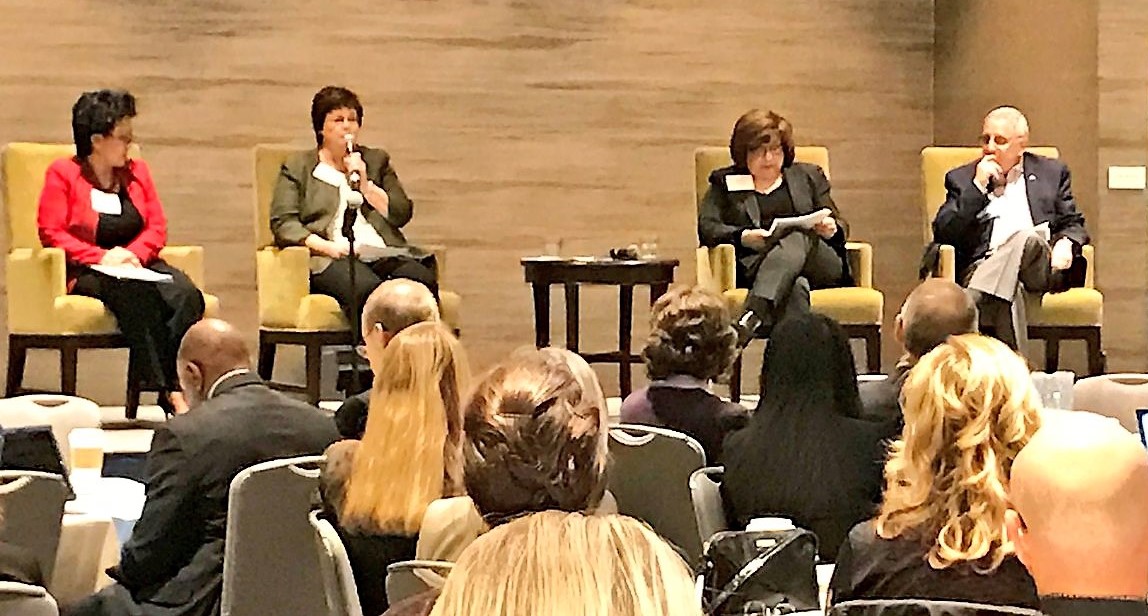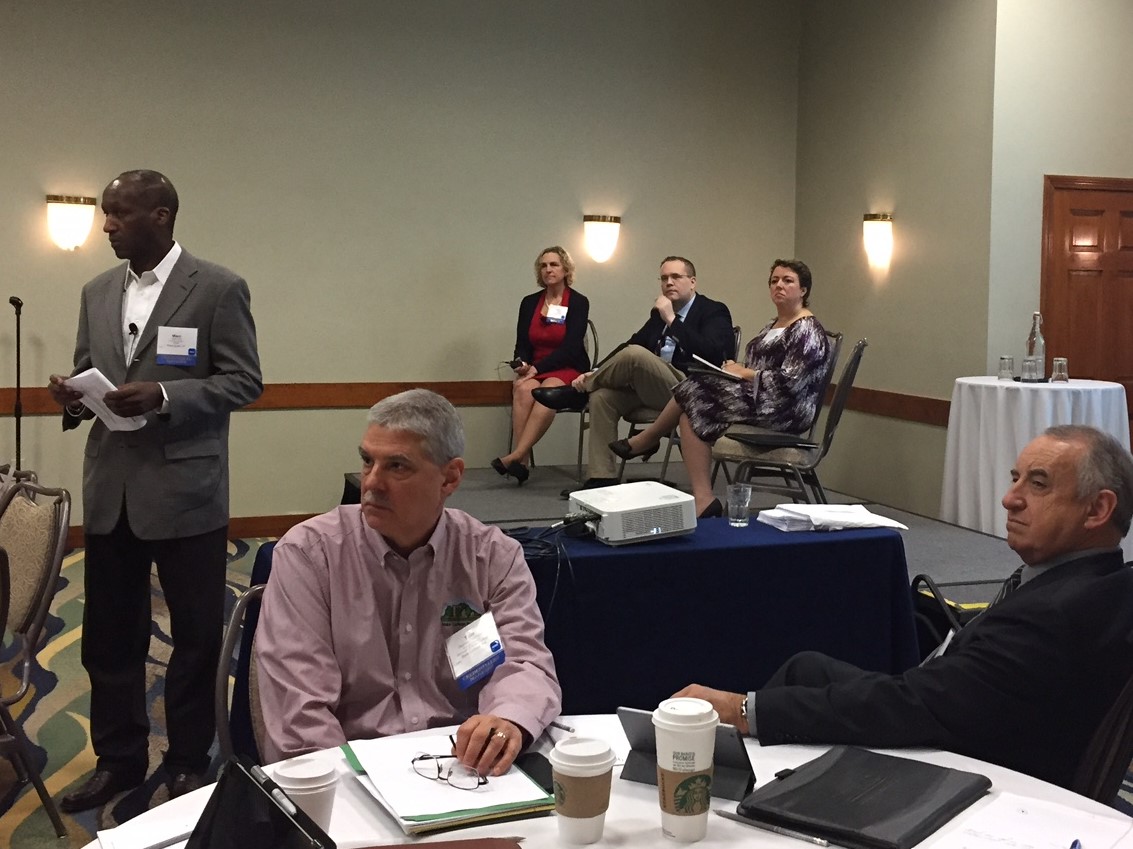
Each of the 2017 ICMA Regional Summits featured a special session titled Equity and Inclusivity in the Workplace and Our Communities. These dynamic panel discussions featured examples from local governments that are successfully addressing equity and inclusivity in their organizations and ensuring equitable service delivery in their communities.
More than ever, local government professionals are called upon to integrate public service with equitable response to a rapidly diversifying community. Local governments are charged with meeting the needs of the whole community and must weigh priorities and deliver services to all residents. Equity and inclusivity go beyond race and gender. Factors that contribute to a diverse community profile include variations in age, economic status, educational attainment, immigration levels, and community size.
Equity and inclusivity are difficult topics with no easy solutions. A positive impact will take time, commitment, and resources. Panelists offered the following advice to make managing these issues less intimidating:
Internal Practices
Present a business case for equity and inclusivity in an organization and the community. This way, staff and senior managers will have an idea of what is expected and why. Also, progress can be tracked and evaluated throughout the process, informing current and future efforts. The topics of diversity, equity, and inclusivity can even be included in performance evaluations for employees.
Consider creating an equity and inclusivity task force or a permanent position, like a chief equity officer, to coordinate internal and external efforts. Tacoma, Washington, formed the Office of Equity and Human Rights, whose mission it is to “achieve equity in the city’s service delivery, decision making, and community engagement … by identifying and eliminating the underlying drivers within the community that perpetuate inequity and provide opportunity and advancement for all.”
Consider nontraditional recruitment efforts to diversify the workforce. The Southeast Regional Summit panel suggested working with community and faith-based groups to help identify candidates. Also, revisit the language of hiring documents and job advertisements to ensure that there is no bias.
Communication is key! Openly discuss commonly misunderstood subjects in internal training programs like “white privilege” and the distinct types of bias. Frame conversations around the idea of moving forward and not placing blame, as making people defensive will impede conversations. Many points of diversity, such as disabilities or gender identity, may not be readily known. A discrimination case is often due to a lack of communication and transparent dialogue to provide accommodation.

ICMA Executive Director Marc Ott takes member questions to the Equity and Inclusivity panel during the 2017 Northeast Regional Summit.
Community Engagement
If your community is passionate about an issue, the local government should reflect that passion. Community engagement and an open dialogue are key to success. Identify community leaders and consistently build on those relationships. It is critical that positive and trusting relationships between the government and the community be established before there is a problem
It is useful to track progress by utilizing data and scored reports. Provide incentives to managers and directors to make equity and inclusivity part of the business plan. San Mateo County, California, utilizes a Community Vulnerability Index to track seven indicators of poverty. One goal of this effort is to evaluate the effectiveness of county services and initiatives over time on poverty and income inequality.
Cedar Rapids, Iowa, utilizes the Human Rights Campaign Municipal Equity Index every year. With a scoring system in place, they work to increase that score each year. It is viewed as an organizational business strategy and they frame it as an opportunity for the innovation of thought that diversity and inclusivity bring.
When circumstances arise that were not foreseen, seize the opportunity to help disadvantaged residents. Maywood, Illinois, for example, upon noticing a rise in the rate of foreclosures, worked with partners to offer free classes on home ownership and finances. Faced with a declining and aging population, Adams, Massachusetts, began efforts to retrain and find employment for seniors and the disabled in their community, with a focus on computer skills. While the programs have seen some success in terms of job placement, they are still developing. They have also trained staff to recognize signs of dementia and opioid abuse to better serve their community.
Dealing with Divisive Events
Following a police shooting, Cedar Rapids, Iowa, found that they were not acting as the main source of information for the community. They worked with multiple groups, both internally and externally, to help inform the public of the local government’s role. They found that, at first, just listening to the community during several forums helped begin the process of building a relationship with the community that will allow future communications to be more productive. Establishing and maintaining strong relationships with community groups and leaders can lead to outcomes focused more on managing grief and healing the community.
Make sure that immigrant communities know who is enforcing the law, how the law is enforced, and why the law in enforced. It can easily be miscommunicated that local law enforcement is responsible for the actions of federal law enforcement. Also, the public may not know when or how a local government can help individuals and when they are bound to uphold particular laws. All communities are different; all community dynamics are different. Working with outside groups to figure out how to properly manage issues facing a community can be very useful.
The Internet: The Good, the Bad, and the Opportunity
The public has become accustomed to receiving information quickly and getting it through social media. On the upside, outreach and information sharing for organizations has become easier than ever. On the downside, a false or misleading narrative can rapidly become mainstream before local governments begin to appropriately manage the flow of information.
To prepare for this, Ottawa County, Michigan, has been planning tabletop exercises with multiple partners to prepare them to get in front of any potential issues and control the information appropriately. Appropriately controlling the information means having more partners, not less. With the ease of communications, all major sources of information need to be working together to provide the public with a consistent and accurate narrative.
Special thanks to the following panelists for their contributions:
- Rey Arellano, assistant city manager, Austin, Texas
- Ann Braga, director, Talent Acquisition Management & Employment, Boston, Massachusetts
- Milton Dohoney, assistant city manager, Phoenix, Arizona
- Reyna Farrales, deputy county manager, San Mateo County, California
- Kate Fitzpatrick, town manager, Needham, Massachusetts
- Tony Mazzucco, town manager, Adams, Massachusetts
- Mary Morrison, policy and program manager, Office of Equity and Human Rights, Tacoma, Washington
- Daro Mott, director of Quality and Performance, Louisville, Kentucky
- David Myers, assistant village manager, Maywood, Illinois
- Margaret Norris, municipal management consultant, University of Tennessee; Municipal Technical Advisory Service (MTAS), Knoxville, Tennessee
- Ruth Osuna, assistant city manager, Oxnard, California
- Angela Sims-Ceja, senior IT program manager, Aurora, Colorado
- Keith Van Beek, deputy county administrator, Ottawa County, Michigan
- LaSheila Yates, civil rights executive director and chief diversity officer, Cedar Rapids, Iowa
One of the theme tracks at the ICMA Annual Conference is “Diversity, Inclusivity, and Social Justice.” Learn more about all of the educational sessions and networking opportunities available at the 2017 ICMA Annual Conference: Building Bridges: Serving Our Whole Community in San Antonio/Bexar County, Texas, October 22-25, 2017.
New, Reduced Membership Dues
A new, reduced dues rate is available for CAOs/ACAOs, along with additional discounts for those in smaller communities, has been implemented. Learn more and be sure to join or renew today!
